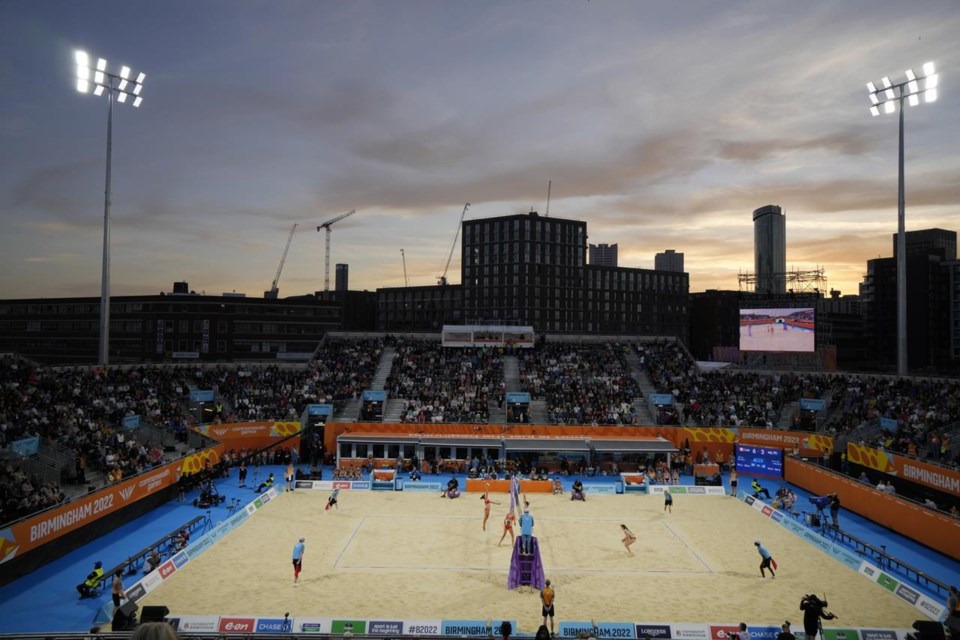ST. JOHN'S, N.L. — A community in the St. John's region has discovered that Olympic-grade beach volleyball sand is rare, complicated and expensive to move.
The town of Paradise will spend $360,525 to purchase and transport 1,100 metric tonnes of regulation-grade beach volleyball sand from a plant in Nova Scotia. Paradise is hosting beach volleyball events during the 2025 Canada Games, and the sand in its courts must meet standards set by the International Volleyball Federation, and followed by Volleyball Canada.
Sure, it may seem like an awful lot of money for a pile of sand, said Dan Bobbett, the town's mayor.
"But, I mean, the Canada Games, we're talking a national sporting event happening right here in St. John's, and the benefit to the region is going to be huge," Bobbett said in an interview. "And these international-rated volleyball courts will stay as part of the legacy piece."
Proper beach volleyball sand must be soft and fluffy, with grains worn smooth by Mother Nature rather than a mechanical process of grinding down rocks, said Ed Drakich, Volleyball Canada's beach high-performance director.
Most sand, whether found on beaches or ground up by machines, is composed of too many tiny grains and will easily compact when pressure is applied to it, which can hurt beach volley players when they dive and slide, Drakich said. If the grains are sharp and jagged, rather than worn smooth by rolling seas, players could get cut.
The International Volleyball Federation requires between 80 and 92 per cent of the sand to be of "course" or "medium" grain, with the width of the tiny particles between 250 and 1,000 micrometres — slightly smaller than the height of a dime.
Anyone hoping to host a beach volleyball event sanctioned by the authority — and therefore by Volleyball Canada — must have its sand tested, Drakich said, adding that the lab and the person regarded as the "worldwide expert" on beach volleyball sand just happen to be in Huntsville, Ont.
He means Todd Knapton, vice-president of sales at Hutcheson Sand & Mixes, which has been the official sand consultant for the International Volleyball Federation for more than two decades. In an interview, Knapton said he has tested and overseen transfers of volleyball-grade sand across the planet.
"There's probably only four places in the world that I've been that have natural sand that meets that specification," Knapton said. The sand for the 2020 Olympics in Tokyo came from Vietnam; the sand for the 2008 games in Beijing was made from a deposit on the island of Hainan, off the southern coast of China, he said.
Sand from a good enough deposit can be sifted until its grain composition meets the international authority's standards.
Knapton's company tested the Nova Scotia sand that will wind up in Paradise, which will be bagged, trucked and shipped to its final destination in Newfoundland.
Bobbett hopes the town's new Olympic-grade courts will attract further big matches and help foster the young community's growing sports scene. Paradise is a new town, incorporated in 1971, and it's home to many families with kids eager to play sports, he said.
The town is working out a plan to take care of the special new sand through St. John's signature rain, drizzle, fog and snow, he said.
Drakich said that will likely be the easiest part of Paradise's sandy saga.
"What you're trying to do is prevent bird poop and stuff like that … animals pooping in the sand," he said. "Just put a tarp over it."
This report by The Canadian Press was first published Jan. 4, 2023.
Sarah Smellie, The Canadian Press


